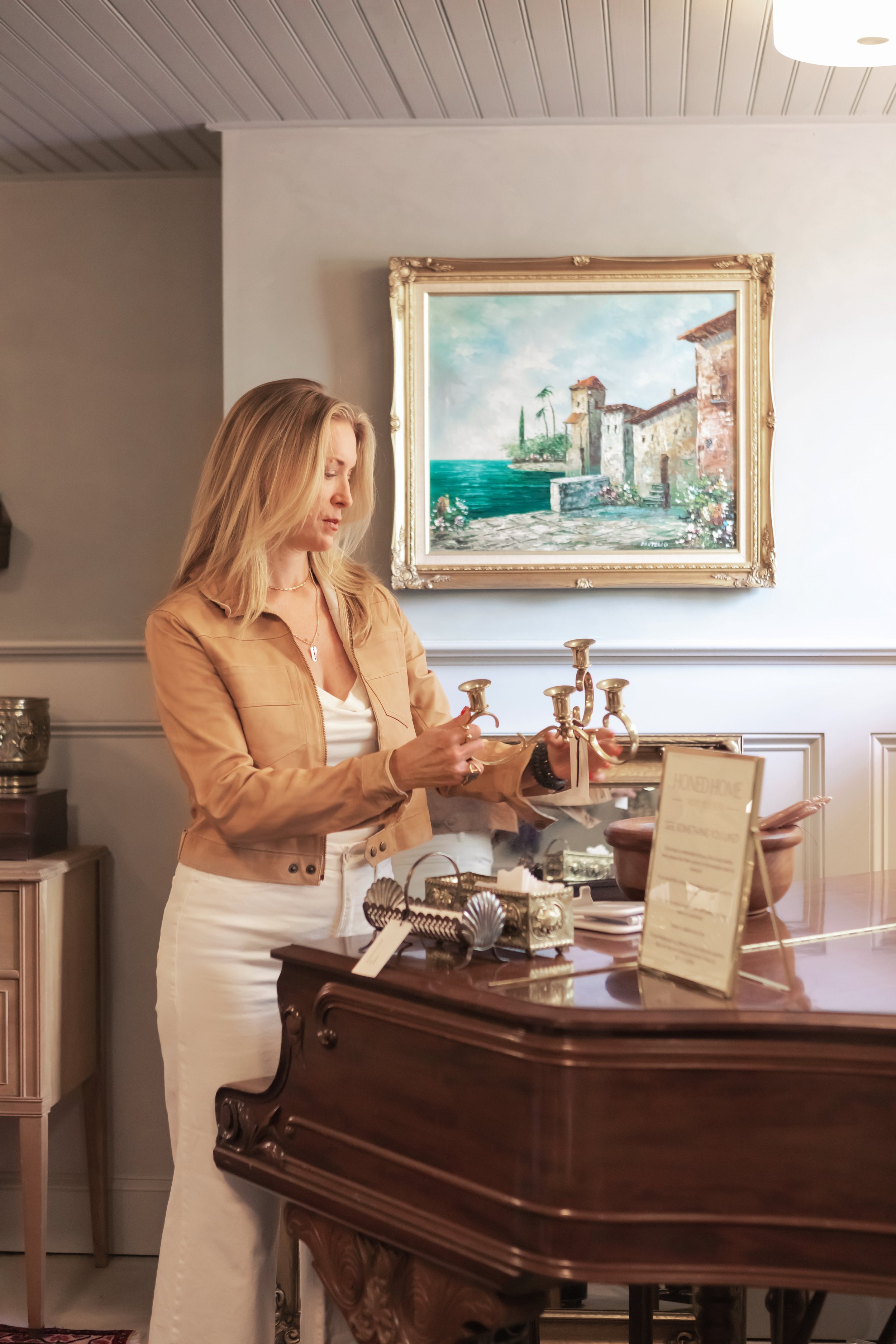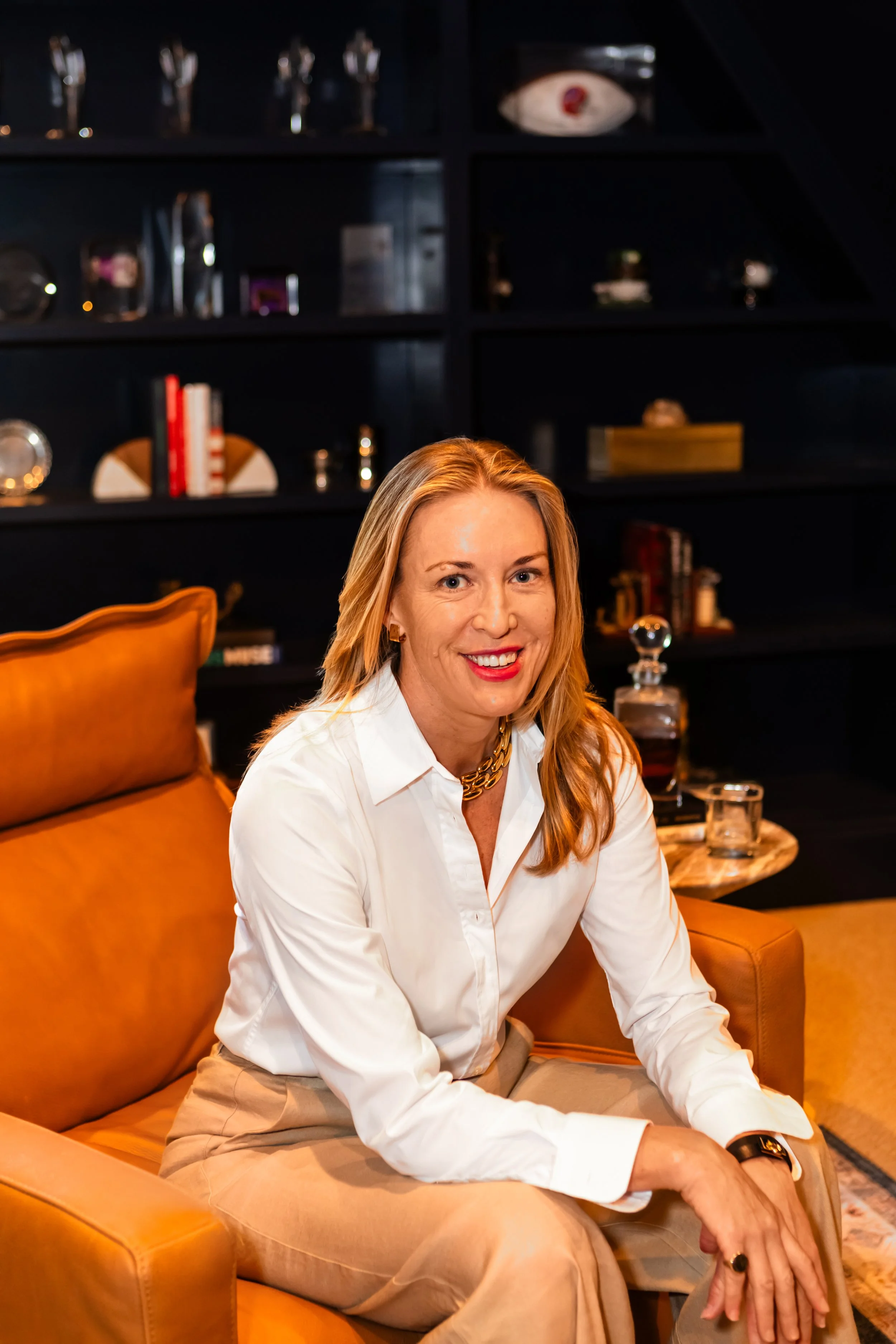Blog
The Matchpointe Edit
Welcome to the Matchpointe Edit — a curated collection of design perspectives, client transformations, and timeless style cues.
Part inspiration board, part behind-the-scenes glimpse, each entry reflects our belief that a well-designed home is a powerful tool for living with clarity, beauty, and intention.
Interior Design for High Performers: The Space Around You Shapes the Way You Operate
How your space shapes your performance — at work, at home, and in life. Why I design homes for high performers, and how the right environment can help you thrive.
Designing a Home Is Like Building a Product: A User-Centric Approach
Split-screen of UX wireframes and interior design with 3D-rendered kitchen, showing parallel design processes.
The Quiet Kind of Luxury: Intentional Design, Personal Sanctuary
In a world that often equates luxury with excess, I’m drawn to something quieter. This is a reflection on the kind of luxury interior design that soothes rather than shouts — inspired by global rituals, refined materials, and the feeling of being truly at home.
Modern Western: Rugged Luxury in the Rockies (the right way)
luxury modern Western home in Jackson Hole, featuring an open-concept kitchen and living room. A grand stone fireplace with a raw wood mantel serves as the focal point, surrounded by plush leather sofas and woven wool throws. Floor-to-ceiling windows reveal breathtaking views of the Rocky Mountains, bathed in soft natural light. The kitchen includes a reclaimed wood island, high-end stainless steel appliances, and bronze fixtures. Warm organic materials—aged timber beams, handwoven Navajo rugs, textured limestone walls, and blackened steel details—create a sophisticated yet rugged atmosphere. Elegant pendant lighting and soft ambient glow enhance the cozy après-ski feel.
Navigating the Next Chapter : Downsizing and Decision Making for Baby Boomers
Curating the Next Chapter: Downsizing with Style and Intention
For many Baby Boomers, downsizing isn’t just a logistical challenge— it’s an emotional and financial turning point. Letting go of a lifetime of collected pieces, from cherished heirlooms to well-loved furniture, can be daunting — especially when Gen X children aren’t exactly clamoring for the antique breakfront or silver tea set. But downsizing isn’t about sacrifice; it’s about refining and curating a home that prioritizes ease, elegance, and modern luxury.
In high-end markets like Raleigh, Greenwich, and San Francisco, strategic updates — such as sophisticated neutral palettes and bespoke interiors — enhance marketability while allowing buyers to envision their own style. The true key? A seamless transition that balances sentiment with practicality, ensuring that the next chapter is defined by intentional design, effortless living, and spaces that reflect a refined yet contemporary aesthetic.
Mid-Century Modern: MCM style with an Austin Twist
Mid-Century Modern design is one of the most enduring and recognizable aesthetics in the world of interiors. With its clean lines, organic forms, and functional beauty, it has been a favorite of architects and designers for decades. But if you had asked me years ago, I wouldn’t have called myself a Mid-Century enthusiast. It wasn’t until I lived in Austin that I truly fell in love with it—Austin’s take on Mid-Century Modern felt fresh, inviting, and effortlessly cool.
So, what is Mid-Century Modern design really about? Why has it remained so popular? And how does Austin’s version of the style set itself apart? Let’s take a closer look.
Maximalism: For art lovers, luxury enthusiasts, and those who love bold contrast
I never thought I’d embrace Maximalism as a design style. My personal aesthetic tends to lean toward neutral palettes and refined, balanced spaces—styles that blend comfort with sophistication. And yet, I find myself endlessly drawn to the work of Kelly Wearstler, one of the most fearless and influential designers of our time.
Her signature spaces are more than just rooms—they are immersive experiences filled with rich materials, sculptural furniture, and artful layering that exude luxury, drama, and depth. And that’s exactly why Maximalism appeals to me—like my other design style favorites, Maximalism elevates everyday living through intentionality and artistry.
So what is Maximalism exactly? Let’s break it down.
Nantucket: A Legacy of Craftsmanship, Quiet Sophistication and Restraint
There’s something about Nantucket that feels like a world of its own. Just off the coast of Massachusetts, this tiny island has an outsized influence on coastal design, inspiring a style that’s as effortless as a salty ocean breeze yet refined enough to feel undeniably timeless. Nantucket interiors aren’t about flashy beach decor or overt nautical themes—they’re about understated luxury, classic craftsmanship, and a color palette borrowed straight from the dunes and the sea.
Much like the island itself, the Nantucket look is rooted in history but never stuck in the past. The weathered cedar shingles, crisp white trim, and hydrangea-lined streets set the tone for an interior aesthetic that balances heritage and modern simplicity. It’s about natural materials, sun-washed hues, and a collected-over-time sensibility—a space that feels as welcoming as a linen-draped bed after a long day at the beach.
Classic Connecticut: Where tradition meets effortless sophistication
Connecticut style has always been about a balance of refinement and comfort. It’s not flashy, but it’s not austere either—it thrives in that sweet spot where classic tradition meets effortless sophistication. Whether you find yourself in the equestrian countryside of Litchfield, the gilded enclaves of Fairfield County, or a historic home along the shoreline, there’s a certain kind of grace to the way homes are designed here. It’s an aesthetic shaped by history, but it has never been stuck in the past.
Over the decades, the Connecticut look has evolved. The 1980s were all about excess—lacquered finishes, chintz-covered everything, and rooms filled to the brim with polished brass and floral draperies. The ‘90s saw a shift to a softer take on tradition, with a heavier focus on English country influences—think muted plaids, slipcovered furniture, and warm woods. By the 2000s, there was an undeniable pull towards minimalism, but Connecticut never fully embraced stark modernity the way other regions did. Instead, there was a layering of the old with the new: antique pieces paired with contemporary art, rich textures offset by airy spaces, classic wainscoting painted in moody, unexpected hues.
Traditional Design: The Definition of Timeless
Trends come and go, but traditional design never fades. It’s a style that carries with it a sense of legacy, warmth, and familiarity—a feeling that a home should be collected, not decorated.
For generations, traditional interiors have been the backdrop of family gatherings, holiday dinners, and everyday comforts. Whether it’s a mahogany dining table polished by years of conversation, a chintz-upholstered chair that once belonged to a grandmother, or the timeless glow of a brass chandelier, these are the details that make a house feel like home.
But even tradition evolves. The 1980s and ‘90s were filled with floral drapery, heavy window valances, and rooms designed more for display than for daily living. Design trends shifted in the 2000s—embracing minimalism, open-concept layouts, and modern materials—many assumed traditional style would fade. It didn’t. Instead, it adapted.
California Cool: Effortless Style with a Laid-Back Edge
There’s something about the California aesthetic that feels completely effortless—like the interiors just happened to fall into place, perfectly sun-kissed and impossibly chic. But make no mistake, California Cool is a carefully balanced mix of relaxed and refined, blending the state’s natural beauty with an innate sense of style that never tries too hard.
This look is rooted in easy, breathable spaces that feel open and inviting, yet always curated. Think light-filled rooms, natural textures, and an unfussy mix of modern and vintage pieces. It’s about warmth without clutter, simplicity without sterility. And while it borrows influences from mid-century modern, bohemian, and minimalist aesthetics, it ultimately has a vibe all its own.















